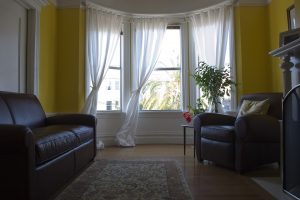Laneway Houses Provide Affordable Urban Living
Thursday, April 20th, 2017Imagine a world in which space was abundant and economical. There are parts of the world where that exists and there are parts of Toronto where that can also exist but for some reason we mainly fail to notice it.
Living in laneways is something of a foreign concept in North America. Underused and underappreciated, city laneways are being touted as the next best thing when it comes to residences and commercial locations especially in those neighbourhoods in which real estate has grown prohibitively expensive.
City councillors promoting the concept say laneway housing could provide secondary suites or the equivalent of basement apartments with the difference being they would be situated in garages on laneways, according to the Toronto Star. They would naturally be serviced with hydro, gas and plumbing from the primary home. And just like living in a basement suite, calls for emergency services or pizza delivery would be made to the primary dwelling’s street address.
According to Now magazine, the city has approximately 2,400 laneways stretching about 300 kilometres through downtown corridors between city streets.
But building a laneway house in Toronto is not easy and approvals are handed out on a case-by-case basis. The good news is that the complicated process is likely going to change soon thanks to Ontario Housing Minister Chris Ballard. Efforts to make laneways more of a reality in Toronto have been stepped up thanks to a memo Ballard sent last year to every Ontario municipality demanding the implementation of secondary suites.
Advocacy group Lanescape is joining forces with sustainable city-building non-profit Evergreen and Councillors Ana Bailão and Mary-Margaret McMahon to amend city bylaws and loosen restrictions on the development of laneway houses, says Now.
According to Lanescape, here are some advantages to laneway housing:
- An increase in the quality of affordable rental housing
- Intensifies neighbourhoods in a way that preserves character, form and scale of built environment
- Uses existing infrastructure
- Affords increased animation and activity in laneways, enhancing pride of place
Since 2009, Vancouver has been home to over 500 laneway homes. Ottawa has recently launched a laneway housing policy and Regina is close to doing so also.
If restrictions are eased in Toronto, the city could see the addition of thousands of low-rise rental units mainly in desirable downtown neighbourhoods.

